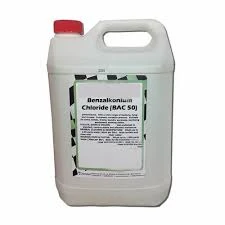Innovative Solutions for Enhanced Water Treatment Using Industrial Flocculants
Understanding Industrial Flocculants Their Importance and Applications
Industrial flocculants are critical substances used in various industries for the process of flocculation, which involves the aggregation of fine particles into a floc or larger mass. This process is essential in several applications, ranging from water treatment to mineral processing and beyond. The effectiveness of flocculants lies in their ability to bind together suspended solids, facilitating the separation of these solids from liquids and enabling cleaner and more efficient operational processes.
Types of Industrial Flocculants
Flocculants can be classified into three main categories organic, inorganic, and synthetic. Organic flocculants are typically based on natural substances, such as polysaccharides and proteins, which are biodegradable and environmentally friendly. Inorganic flocculants, such as alum and ferric chloride, are commonly used in water treatment processes due to their cost-effectiveness and ability to handle a broad range of particle types. Synthetic flocculants are tailored chemical compounds, often polyacrylamides, designed to optimize performance under specific conditions, making them highly effective in industrial applications.
Applications of Flocculants in Industry
One of the most significant applications of flocculants is in water treatment facilities. Here, they are used to clarify drinking water and treat wastewater. Flocculants promote the aggregation of impurities and suspended solids, which can then be easily removed through sedimentation or filtration. This process is crucial for ensuring the safety and quality of water, making flocculants indispensable in public health efforts.
industrial flocculant

In the mining industry, flocculants are utilized to enhance the extraction and recovery of valuable minerals. During mineral processing, finely crushed ore is mixed with water and other chemicals to form a slurry. Flocculants aid in the settling of solid particles, allowing for the efficient separation of valuable minerals from waste materials. This not only improves the yield of the mining process but also minimizes environmental impact by reducing the amount of tailings generated.
Flocculants also find applications in the paper and pulp industry. They are used to improve the thickening, dewatering, and overall quality of pulp. The addition of flocculants facilitates the rapid removal of water from the pulp, leading to higher production rates and enhanced product quality. Similarly, in the food and beverage industry, flocculants assist in the clarification of juices and other liquids, ensuring a clearer and more appealing final product.
Environmental Considerations
As industries increasingly prioritize sustainability, the choice of flocculants has become an important consideration. While traditional inorganic and synthetic flocculants offer effective solutions, there is a growing demand for more environmentally benign alternatives. Many organizations are turning to bio-based flocculants derived from renewable resources, such as agricultural by-products, to reduce ecological footprints while maintaining performance. This shift is reflective of a broader trend towards sustainable manufacturing practices, where minimizing waste and pollution is paramount.
Conclusion
In summary, industrial flocculants play an essential role across multiple sectors, facilitating processes that contribute to water quality, mineral recovery, and product clarity. Understanding the types of flocculants available and their applications is crucial for industries seeking to optimize their operations and reduce environmental impacts. As technology advances and the demand for sustainable solutions grows, the field of flocculants will likely see continued innovation, ensuring their relevance and importance in modern industrial practices. Through careful selection and application, flocculants will remain a vital component of effective industrial processes for years to come.
-
Water Treatment with Flocculant Water TreatmentNewsJun.12,2025
-
Polymaleic AnhydrideNewsJun.12,2025
-
Polyaspartic AcidNewsJun.12,2025
-
Enhance Industrial Processes with IsothiazolinonesNewsJun.12,2025
-
Enhance Industrial Processes with PBTCA SolutionsNewsJun.12,2025
-
Dodecyldimethylbenzylammonium Chloride SolutionsNewsJun.12,2025





